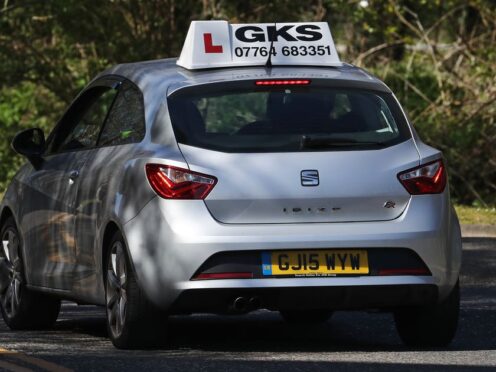A limit on passenger numbers and restricted driving at night may be solutions to reduce high insurance costs for young motorists, MPs have suggested.
DUP MP Carla Lockhart (Upper Bann) led a debate in Westminster Hall on Government support for young drivers where she said high premiums costs were a barrier to young people getting a driving licence.
“For 17-year-olds premiums surge by an average from £1,423 to £2,877, for 18-year-old drivers the average policy price reached £3,162, and I have had constituents contacting me having had quotes of between £5,000 and £7,000 for a vehicle worth half the price,” she said.

Ms Lockhart conceded that young people are more likely to be involved in road collisions, stating “the industry view does seem to be supported by data”.
She also stated the Government had responded to a petition on the issue and has “ruled out any interference in the market” but suggested other methods that might be utilised to reduce insurance costs for young people.
She said: “I know many of these may not be what young drivers wish to see explored, as all bring with them some form of restriction on that freedom they desire, but given the situation now with insurance costs we must look at all ways that young drivers can force the hand of insurers to reduce those premiums.
A graduated driving licence scheme was described by the member for Upper Bann as “the most effective intervention in reducing incidents and fatalities for young drivers”.
Ms Lockhart suggested this could include a 12-month minimum learning period, a ban on intensive driving courses, lowering the age at which young people can learn to drive, a restriction on the number of young passengers, a restriction on driving in night time hours or a lowering on the blood alcohol limit for young drivers.
“All these measures seem fair and indeed compatible with still getting young people on the road soon after they turn 17 but more safely,” she said.
Conservative MP Sir Bill Wiggin (North Herefordshire) expressed support for some additional restrictions on young drivers that would facilitate lower insurance premiums.
“One of the most important steps forward I think we could have is an industry supported training solution so that once you’ve passed your driving test, if you go on to further training you will get cheaper insurance,” he said.

Sir Bill also said that a restriction on passengers would decrease distractions for young drivers.
He told MPs: “Now for young people, somebody gassing in the back of the car, they can cope with one voice but if there’s loads of them and I think we’ll all remember from our younger days packing people into the car and popping down to the pub or whatever, but all that noise is bad for the decision-making process that young men’s brains go through when they perceive a hazard.
“Having one passenger makes another difference to the insurance industry on a rather dark side, it means that if there is an accident there are less people involved, and therefore the cost of those life-changing injuries is reduced.”
Transport minister Anthony Browne said that Government intervention in insurance “could damage competition overall”.
He said: “I should say that insurance is a free market and it’s not one that is run by the Government and I think we’ve got a very strong regulatory regime in place, it does need to work to make sure those markets work fairly and in the interest of consumers.”
He added: “The Government does not intervene or seek to control that market, and nor should it try and control that market.”
